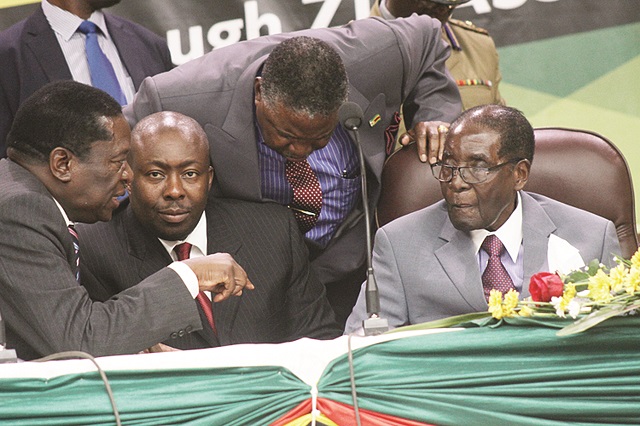Corruption, economic and political instability pulling down Zimbabwe
By Sij Ncube
Rampant corruption, economic and political instability are thwarting Zimbabwe’s competitiveness on the global market which is a major impediment to Harare’s desperate efforts to attract direct foreign investment (FDI).

The government has launched an ambitious national image branding initiative intended to spruce up President Robert Mugabe’s and his Zanu PF regime’s battered international and regional image as it battles to get FDI and in the wake a decline in foreign tourists particularly from neighbouring South Africa.
But business, industrial and other stakeholders in the image building initiative have told the government while the plan appeared noble it was being thwarted by myriad political, economic and social problems blamed mostly on the Zanu PF administration.
Richard Mubaiwa, the chief executive officer of the Zimbabwe Investment Authority (ZIA), speaking during the launch of the image management in Harare, pointed out that the perception about Zimbabwe is generally negative in nearly all fronts, including perceived bad governance.
Other negative perceptions, said the ZIA boss, included poverty, high crime rate and poor infrastructure.
“These (negative perceptions) hold back the image of the country as an investment destination and consequently, the country is not attracting significant levels of investment commensurate with our resources endowments,” he said, adding that some of the challenges facing the local economy included a debt overhang, sanctions, bureaucracy and corruption.
Mubaiwa revealed that the country ranked very low in the regional comparative FDI inflows.
In 2015, Zimbabwe raked in only $421 million in FDI inflows compared to $1 777, 4 billion achieved by neighbouring South Africa, Mozambique $3710, 8 billion, Namibia $1077, 8 billion and Zambia $1653 billion.
There is also a huge infrastructure gap estimated at $2, 5 billion, ailing strategic parastatals, capital constraints, under performance of agriculture value chains and below potential, perceived high country risk and a highly informalised economy.
Eighty five (85) percent of the country’s small-to-medium scale enterprises are informal and estimated to have the potential of contributing 51 percent to the Gross Democratic Product.
Mubaiwa, however, said despite the negative perception, Zimbabwe has a number of positive attributes that it should ride on to create a positive national brand such as its educated human capital, good weather and numerous tourists attractions, particularly the Victoria Falls and Great Zimbabwe.
“Zimbabwe has made significant progress in reforming and improving various areas of doing business in the country. It is necessary to make visible these positive developments and attend to the correction of the image of Zimbabwe in order to attract enhanced volumes of investment. Investment and immigration should thus act as a major pillar in the process of developing an overarching national brand.”
Richard Ngwenya, the president of the Zimbabwe Council of Tourism, urged the government to adopt the South African Rand as currency of choice, saying the US dollar was driving away tourists from visiting the World acclaimed Victoria Falls and other tourist attractions.
Ngwenya said there has been a marked declined of traffic to the hot-resort town from South Africa as holidaying has become expensive due to the use of the US dollar.
According to statistics released by the Zimbabwe Tourism Authority for the first quarter of 2016 show that 38 000 tourists visited the country from South Africa a 2 percent decline compared to corresponding period in 2015.
“South African tourists are finding it expensive to visit the Victoria Falls due to the use of the US dollar. We ask the government to use the rand as official currency to overcome some of the problems we are facing in the tourism sector,” he said.
The government adopted a multiple currency regime in 2009 which now includes the US dollar, the Rand, Chinese Yuan, Canadian dollar, Australian dollar and the Botswana Pula. But the greenback has remained the dominant currency which is preferred by all traders.
The government has flatly refused to adopt the Rand and critics add it Harare has to join the Southern African Customs Union to use the currency in the local economy. Radio VOP






